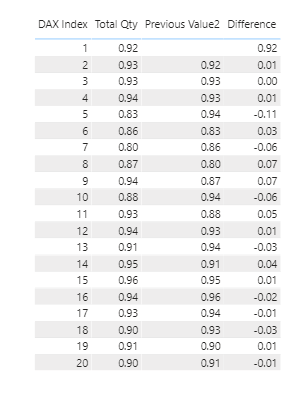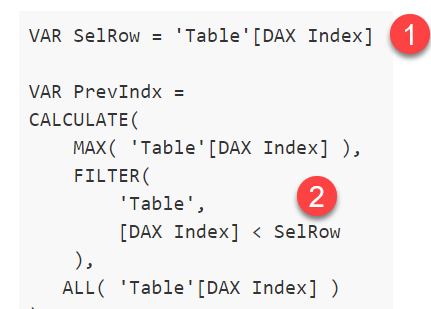OK, RankX-based index works like a champ.
DAX Index =
RANKX(
ALL( 'Table' ),
[Date],,
ASC,
Dense
)
Retrieving the previous value just requires a couple of tweaks to our prior Previous Value measure - creation of a new variable to track our current row position, and referencing DAX Index instead of the PQ-created index we used before:
Previous Value2 =
VAR SelRow = 'Table'[DAX Index]
VAR PrevIndx =
CALCULATE(
MAX( 'Table'[DAX Index] ),
FILTER(
'Table',
[DAX Index] < SelRow
),
ALL( 'Table'[DAX Index] )
)
VAR Result =
CALCULATE(
MAX( 'Table'[Total Qty] ),
FILTER(
'Table',
'Table'[DAX Index] = PrevIndx
)
)
RETURN
Result
And now this provides the same result as before, but should be compatible with DIrect Query limitations:

Hope this gets you what you need - shout back if it doesn’t. Full solution file posted below.
- Brian
eDNA Forum - Previous Value Solution - Take 2.pbix (20.4 KB)
P.S. This construct is worth tucking in your back pocket, since it’s a good, flexible method for traversing columns that can be adapted for a wide variety of situations w/o the use of EARLIER. If you look in the SQLBI DAX guide, they recommend this approach even when EARLIER is available…

